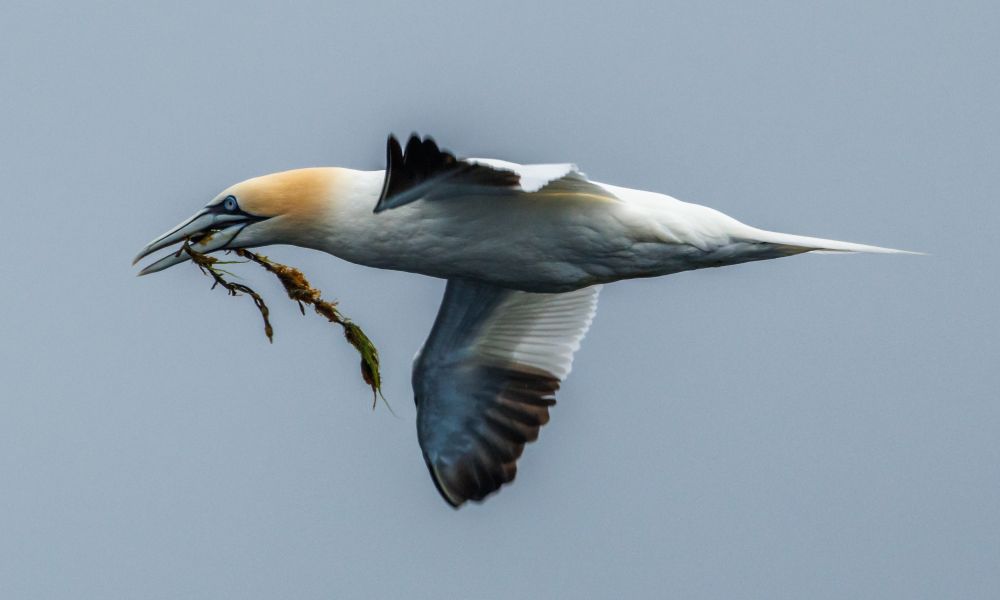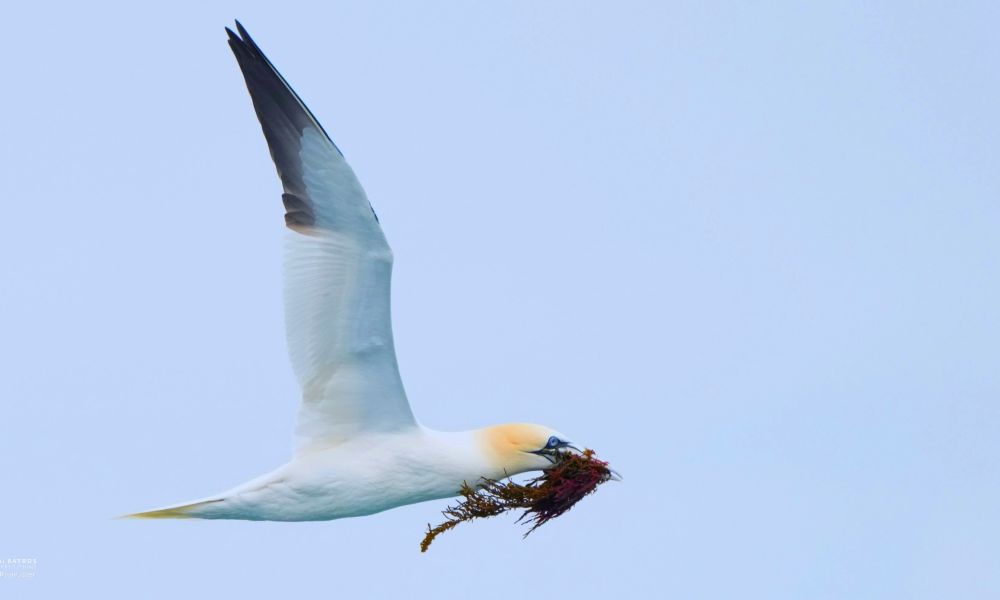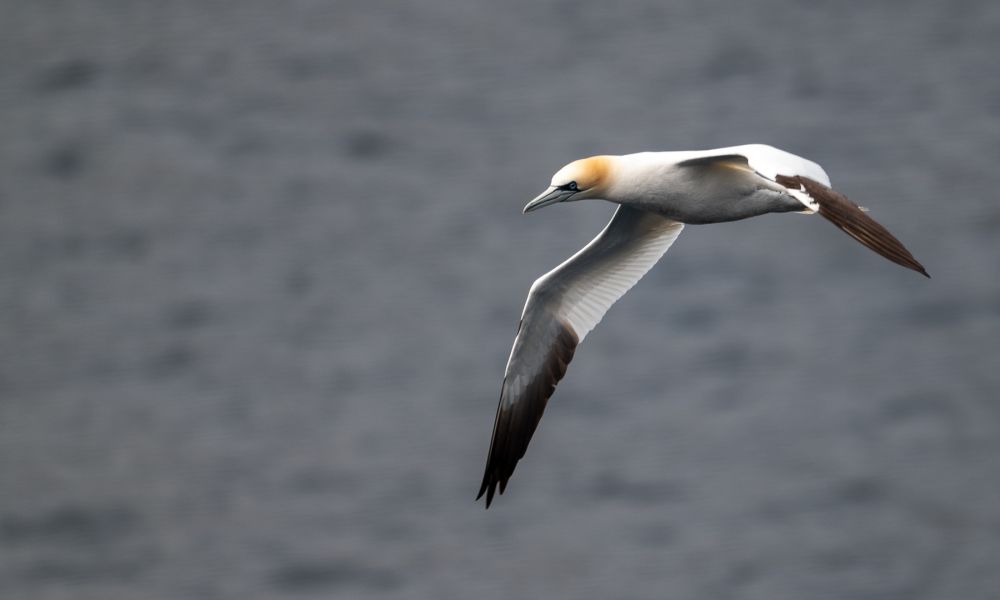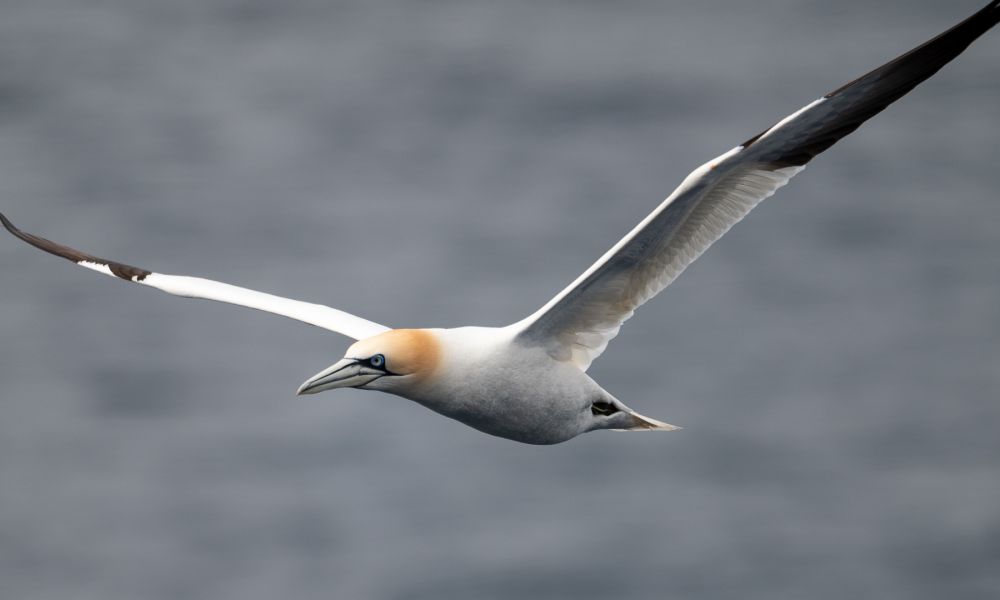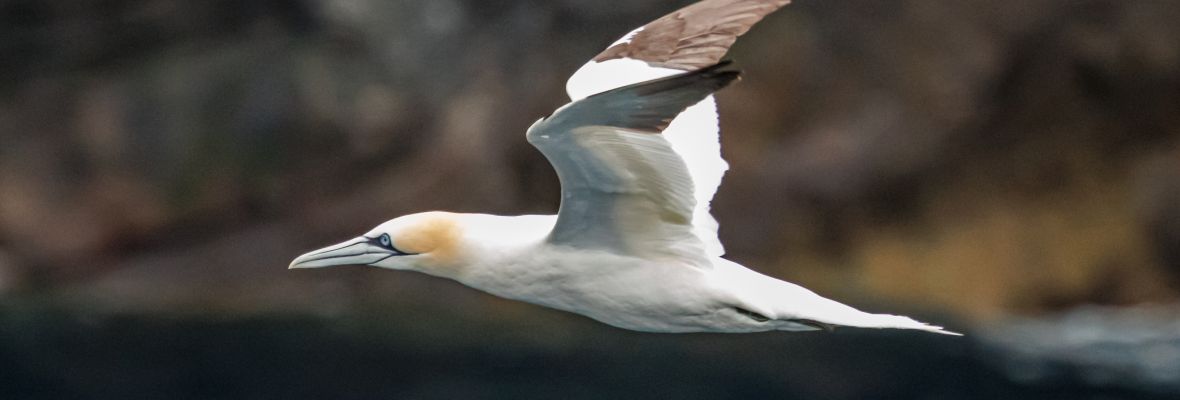Northern Gannet
With their dramatic dives and elegant gliding flight, the Northern Gannet is one of the most iconic seabirds of the North Atlantic.
Facts about Northern Gannet
Scientific Name: Morus bassanus
Population: Estimated at 1,500,000-1,800,000 individuals globally
Destinations: Jan Mayen, Iceland, Canada, Denmark, France, Norway, Spain, Portugal, England, Scotland, Argentina
Average Length: Adult: Males & Females: ~0.9–1 m (2.9–3.3 ft); Newborn: ~7–10 cm (2.8–3.9 in)
Average Weight: Adult: Males & Females: ~2.5–3.6 kg (5.5–7.9 lbs); Newborn: ~80–100 g (2.8–3.5 oz)
Diet Habits: Primarily fish (e.g., mackerel, herring, sand lance); catches prey by spectacular high-speed dives from great heights
Kingdom: Animalia
Phylum: Chordata
Class: Aves
Order: Suliformes
Family: Sulidae
Genus: Morus
Species: M. bassanus
English: Northern Gannet
Danish: Sule
Chinese: 北方塘鹅
Swedish: Havssula
Finnish: Suula
Norwegian: Havsule
Polish: Głuptak
Japanese: キタハイイロカツオドリ
Spanish: Alcatraz atlántico
French: Fou de Bassan
Unlocking the Secrets of the Northern Gannet
What does a Northern Gannet look like?
The northern gannet is a large seabird that is easily recognisable. It has long, slender white wings with a large black wingtip and is mostly white on its body. Its neck is yellow, with a big bill that has light colouring and black horizontal stripes. Its legs and feet have a black membrane, and it also has a blue ring around the eye.
Where do Northern Gannets live?
Northern gannet habitats are commonly found in the south of the Atlantic Ocean, on islands and along the coasts of Europe, but since 2011, they have spread north as breeding birds to Bjornoya.
How big is a Northern Gannet?
Northern gannet size is up to 1 metre (3.3 feet) from beak to tail tip. Additionally, the northern gannet wingspan is between 170–192 cm (5.6–6.3 feet), which is an impressive size when compared to other seabirds, such as the dunlin, Atlantic puffin, and rock ptarmigan.
What do Northern Gannets eat?
The northern gannet's diet consists mainly of fish, and this seabird is renowned for its diving techniques from heights of up to 30 metres, which makes for a spectacular sight given the size of the bird.
How long can a Northern Gannet stay underwater?
Although they stay underwater for only a few seconds (up to 30 seconds), the northern gannet when diving can surpass over 22 metres (72 feet) in a single plunge to catch a fish.
What is the lifespan of a Northern Gannet?
Northern gannet bird lifespan is around 17 years, but they can live up to 35 years in the wild.
Do Northern Gannets have predators?
Northern gannet predators are gulls and skuas, which exploit vulnerable nests with eggs or chicks. Additionally, it may be impacted by human activities, climate change, and overfishing, as these affect their food sources.
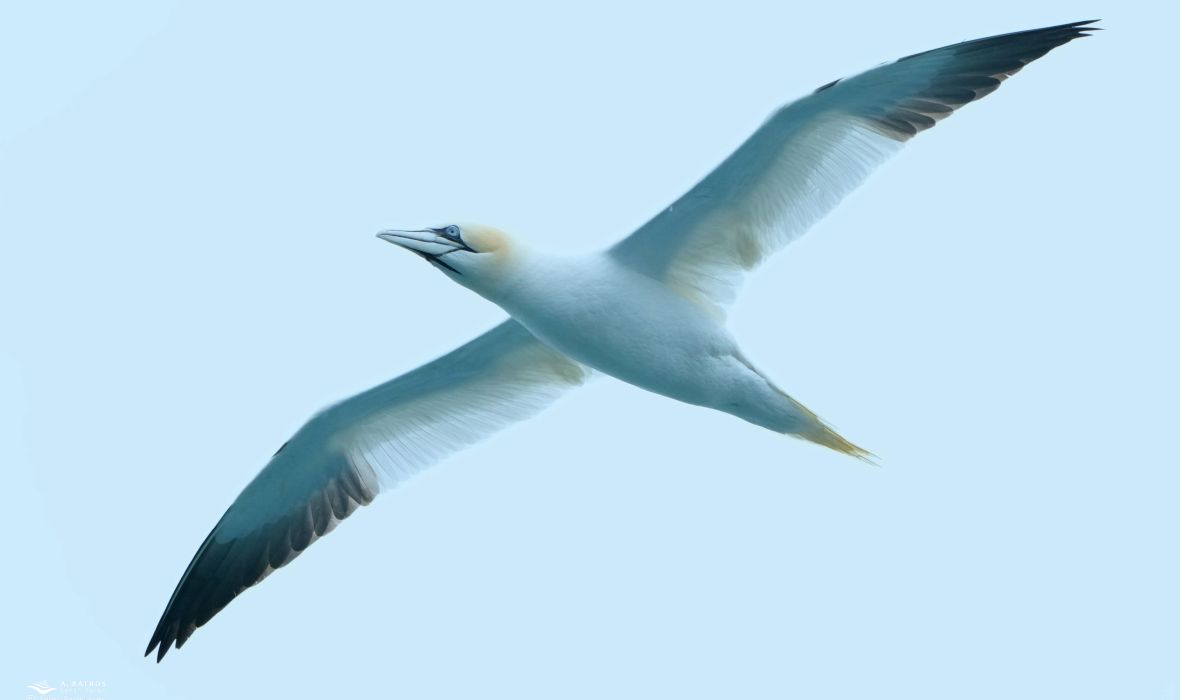
How Many of These 10 Northern Gannet Facts Did You Already Know?
Northern Gannet Fact #1:
Northern gannet colonies are typically found in steep sea cliffs.
Northern Gannet Fact #2:
The colonies of northern gannets do not range to the Southern Hemisphere or Greenland.
Northern Gannet Fact #3:
The northern gannet's nearest relatives are cormorants and pelicans.
Northern Gannet Fact #4:
The northern gannet nests in colonies on bird cliffs situated on inaccessible rock shelves by the sea, alongside other sea birds like auks and black-legged kittiwakes.
Northern Gannet Fact #5:
Northern gannet are classified as ‘Least Concern’ by the IUCN Red List.
Northern Gannet Fact #6:
Their maximum elevation is 200 metres.
Northern Gannet Fact #7:
They are complete migrant seabirds.
Northern Gannet Fact #8:
In flight, it appears nearly cross-shaped because of its long beak, throat, and wedge-shaped tail.
Northern Gannet Fact #9:
Northern gannet eggs are usually pale blue-green immediately after being laid.
Northern Gannet Fact #10:
Juvenile northern gannets are recognised by their dark, sooty-brown plumage.
Join on an Arctic adventure with Albatros Expeditions and witness the wonders of Arctic wildlife!
